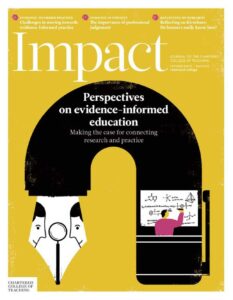The role of testing in knowledge retention

Jude Hunton considers research on learning for examinations and the kinds of effective strategies that can be gleaned from research on testing and memory.
Teaching can be a bizarre job at times. There might be a zillion competing distractions for the individual teacher; many of these will buffet and blast us as intrepid professionals hither and thither, causing drag against dynamism, and keeping us from exerting our passion with scholarly force upon the Thing Itself. I believe, however, that things are beginning to change.
Increasingly, I have come to hold the view (and note approvingly that it appears to be a socially prevailing one) that research and evidence-informed approaches are providing sceptical ballast to keep us on an even keel and resist much of the institutional backwash. And I’ve found, while working alongside other inspiring professionals at my school, that we can adapt theory, research and education evidence into productive practices that enhance teaching and learning for leaders and teachers. At my school we have a whole-school teaching approach that stands on a number of research shoulders, and draws together, in particular, work by the following: the Bjorks on the ‘new theory of disuse’ (Bjork and Bork, 1992); Roediger and Karpicke on ‘testing effect’ (Roediger and Karpicke, 2006) and John Dunlosky on self-regulated study skills (Dunlosky, 2013). We are developing a culture of teaching that puts subject pedagogy first and stresses how knowledge and testing can be made to complement each other effectively in the classroom. This freedom to cut through to teaching has meant that in English (my subject) we have been investigating how best to teach for exam transferThe processes of applying learning to new situations, an approach we have termed ‘exam literacy’.
We took the ideas of Bjork and Bjork (1992) regarding the vital role of the process of forgetting as a means of strengthening memory over time. We applied these ideas to a ‘spaced and interleaved’ English curriculum, often leaving spaces of a couple of weeks before returning to and retrieving prior knowledge. We went further and connected up to Roediger and Karpicke’s work on test-enhanced learning or the ‘testing effect’. Reading this work explained to us that testing is actually innately good and effective; the more tests our students did, the better. As Roediger and Karpicke put it: ‘Testing is a powerful means of improving learning, not just assessing it.’ The test or retrieval event could be in a range of varied conditions; for example, we quizzed with multiple choice to use recognition; then with clozes; then with 2D symbols; then with single questions with responses in pairs; then recalling lists in a race against the length of time it took last time, and so on. We constantly challenge ourselves to develop very many different experiences, all with the same knowledge content and the same principles of retrieval over time, allowing for memory to fall into a period of disuse and decay before being dredged up and reused.
Using this research base as leaders has helped us in our messages to teachers across the school. This is an example of the guiding principles that we share with our staff during training:
1. Remembering
Quizzing, self-testing, retrieval practice, multiple choice, generative learning, clozes, teaching that doesn’t overload working memory, worked examples and models to cue memory, rhymes and stories to make it stick…
2. Chunking
ScaffoldingProgressively introducing students to new concepts to suppor, spaced practice, interleaved practice, spiral curricula…
3. Practising
Varying the conditions of practice, a range of different contexts with different memory cues, transfer…
These guidelines are intended as a ‘tight loose’ reference for all teachers, not just English staff, to help grow a culture of professional practice that allows for teachers to pursue their intellectual curiosity freely, but through a common language.
For example, this loose framework has encouraged us to look at the complementary work of Dunlosky in interleavingAn approach to learning where, rather than focusing on one p and self-testing. Our Year 11 English curriculum, for example, has interleaving built into its design. All classes carry out summative-style essays at a mid-term point while studying a different topic. In terms of ‘remembering’, it has influenced teachers to discuss and share how they would use ‘desirable difficulties’ in lessons.
I don’t think that there has ever been a time when there have been so many glittering ideas for teachers to cast a net and scoop up those that may work for them. At my school and in my own English teaching, I have found that the Bjorks’ work on variability, spacing and memory to afford better chances of transfer, alongside the theorists above has added emphatic impetus to the way we plan, discuss practice and teach today.
References
Bjork RA and Bjork EL (1992) A new theory of disuse and an old theory of stimulus fluctuation. In: Healy A, Kosslyn S and Shiffrin R (eds) From Learning Process to Cognitive Process: Essays in Honor of William K Estes (Vol 2). Erlbaum: Hillsdale, NJ, pp.35-67.
Dunlosky J (2013) Strengthening the student toolbox. American Educator 37(3): 12-21.
Roediger III HL and Karpicke, DJ (2006) Test-enhanced learning. Psychological Science 17(3): 249-255.
Further Reading
Jeffrey Karpicke’s blog provides updates on his ongoing programme of research and gives useful insights into how his research findings can be used to inform classroom practices: http://www.apa.org/science/about/psa/2016/06/learning-memory.aspx












